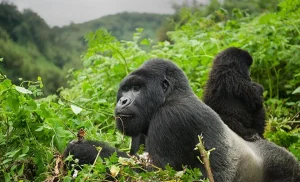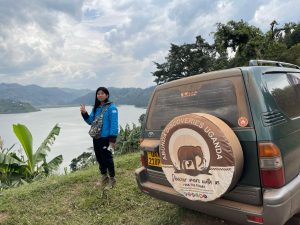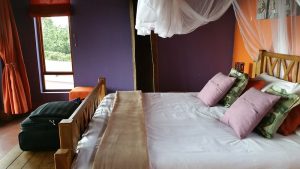Gorilla trekking is one of the most extraordinary wildlife experiences in the world. Spending a day trekking through the misty forests of East and Central Africa to observe mountain gorillas in their natural habitat is a dream for many travelers. A gorilla trekking day experience combines adventure, wildlife observation, and conservation education, offering a truly once-in-a-lifetime encounter.
What Happens on a Gorilla Trekking Day?
A typical gorilla trekking day begins early in the morning and follows a structured itinerary to maximize the experience:
- Morning Briefing: Visitors meet at the park headquarters, where guides provide an orientation. This includes a review of trekking rules, safety guidelines, and an overview of gorilla behavior.
- Preparation: Trekkers receive walking sticks if needed and ensure they have suitable clothing, water, and cameras packed.
- Hiking to Gorilla Habitat: Guided by expert rangers and trackers, visitors walk through dense forest, bamboo thickets, and mountainous terrain. The trekking duration depends on the location of the gorilla family.
- Encounter with Gorillas: Upon finding a gorilla group, visitors spend up to one hour observing the gorillas. This is a regulated period to minimize stress and disturbance.
- Return Journey: After the encounter, trekkers return to the park headquarters, often followed by lunch or optional cultural activities.
A gorilla trekking day combines physical activity, wildlife observation, and educational moments about conservation and the local ecosystem.
How Long Does Gorilla Trekking Take?
The duration of a gorilla trek varies based on the assigned gorilla family and their location on the trekking day. Treks can last anywhere from 1 to 6 hours, including hiking and observation time.
Shorter treks occur when gorilla groups are near park boundaries, while more strenuous hikes may require navigating steep slopes and dense vegetation. Guides provide real-time updates during the hike, ensuring trekkers are aware of the distance and estimated time to encounter the gorillas.
How Much Time Do You Spend with Gorillas During a Trek?
Once a gorilla group is located, visitors are allowed exactly one hour to observe and photograph the gorillas. During this time, you can watch the gorillas feeding, playing, grooming, and interacting with each other.
Guides maintain a respectful distance to ensure the safety of both trekkers and gorillas. This one-hour limit is critical for minimizing human impact and preventing disease transmission, as mountain gorillas are highly susceptible to human illnesses.
What Time Does Gorilla Trekking Start?
Most gorilla trekking excursions start early in the morning, usually between 7:00 AM and 8:00 AM. Early departures help maximize daylight and provide the best opportunity to locate gorilla families.
After the morning briefing and preparation, trekkers are guided into the forest for the day’s adventure. Early starts also allow visitors to avoid afternoon rains, which are common in mountainous habitats. Gorilla Trekking Day Experience
How Difficult Is a Gorilla Trek?
Gorilla trekking difficulty depends on terrain, weather, and the distance the gorillas have traveled. Hikes can range from easy walks on gentle slopes to strenuous climbs through dense vegetation.
- Trekkers should have moderate fitness levels to navigate muddy trails, steep hills, and bamboo thickets.
- Porters are available to assist with heavy bags and provide support for less experienced hikers.
- Children under 15 and individuals with severe mobility challenges are not permitted for safety reasons.
Despite the physical challenge, guides ensure that the trek is safe and rewarding for all participants.
What Should You Wear for Gorilla Trekking?
Appropriate clothing is essential for comfort and protection during the trek:
- Long-sleeved shirts and trousers to protect against nettles, insects, and branches
- Sturdy hiking boots with a good grip
- Raincoat or waterproof jacket for unexpected rainfall
- Hat and gloves for warmth in higher altitudes
- Neutral-colored clothing (green, brown, beige) to blend into the forest environment
Proper attire enhances the trekking experience and minimizes disturbances to gorillas.
What Should You Pack for a Gorilla Trek?
Packing efficiently is key to a comfortable day. Essential items include:
- Water bottles and light snacks
- A camera or a smartphone with a zoom lens
- Binoculars for distant wildlife observation
- Sunscreen and insect repellent
- Personal medications, if needed
- Small backpack to carry essentials
Many lodges and tour operators also provide walking sticks, ponchos, and disposable gloves for hygiene during the trek.
How Much Does a Gorilla Trekking Permit Cost?
Gorilla trekking permits are required for all visitors and vary by country:
- Rwanda: USD 1,500 per person per trek
- Uganda: USD 800 per person per trek
- DR Congo: USD 400–600 per person per trek
Permits are limited to 8 visitors per gorilla family per day to ensure sustainable tourism. It is essential to book permits well in advance due to high demand.
What Are the Rules for Gorilla Trekking?
Gorilla trekking has strict rules to protect both visitors and gorillas:
- Maintain a minimum distance of 7 meters from gorillas
- Avoid direct eye contact or loud noises
- Do not eat, drink, or smoke near gorillas
- Follow guide instructions at all times
- Avoid trekking when sick to prevent disease transmission
Adhering to these rules ensures a safe and responsible encounter.
Can Children Go Gorilla Trekking?
Children under 15 years of age are not permitted on gorilla treks. This restriction safeguards the gorillas from disease and ensures the safety of young trekkers. Families with younger children can explore nearby cultural or nature activities instead.
How Close Can You Get to Gorillas During Trekking?
Visitors are required to maintain a 7-meter distance from gorillas. This distance protects the gorillas from human-transmitted diseases while still allowing excellent observation and photography opportunities. Guides will help position visitors for optimal viewing without disturbing the animals.
Which Countries Offer Gorilla Trekking Experiences?
Gorilla trekking is possible in three African countries:
- Rwanda: Volcanoes National Park
- Uganda: Bwindi Impenetrable Forest and Mgahinga Gorilla National Park
- DR Congo: Virunga National Park
All three countries provide guided trekking experiences, professional rangers, and permits to ensure responsible tourism.
Is Gorilla Trekking Safe?
Yes, gorilla trekking is safe when conducted with professional guides and adherence to rules. Rangers monitor gorilla behavior and forest conditions to prevent potential risks. Armed rangers accompany groups in some regions, particularly in remote areas, to ensure visitor safety.
How Many People Are Allowed per Gorilla Trekking Group?
Each gorilla family is limited to 8 visitors per day, ensuring minimal disturbance and an intimate experience. This small group size also allows guides to provide personalized attention and interpret gorilla behavior for visitors.
How Long Do You Stay with Gorillas Once You Find Them?
Once located, the group spends one hour with the gorillas. During this time, visitors can observe their social interactions, grooming habits, feeding patterns, and playful behavior. This regulated encounter ensures ethical wildlife tourism and supports gorilla conservation.
Conclusion
A gorilla trekking day experience is an extraordinary combination of adventure, wildlife observation, and conservation education. From early morning briefings to one-hour encounters with gorilla families, every moment is carefully structured to provide a safe, ethical, and unforgettable experience. Gorilla Trekking Day Experience
By understanding trekking duration, difficulty, preparation, permits, and rules, visitors can make the most of this once-in-a-lifetime opportunity. Gorilla trekking not only creates lasting memories but also contributes directly to the protection and conservation of these endangered mountain gorillas for future generations.




